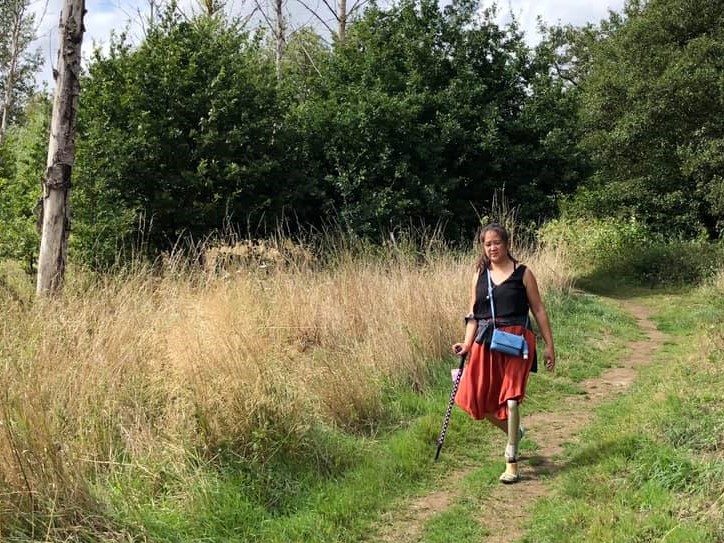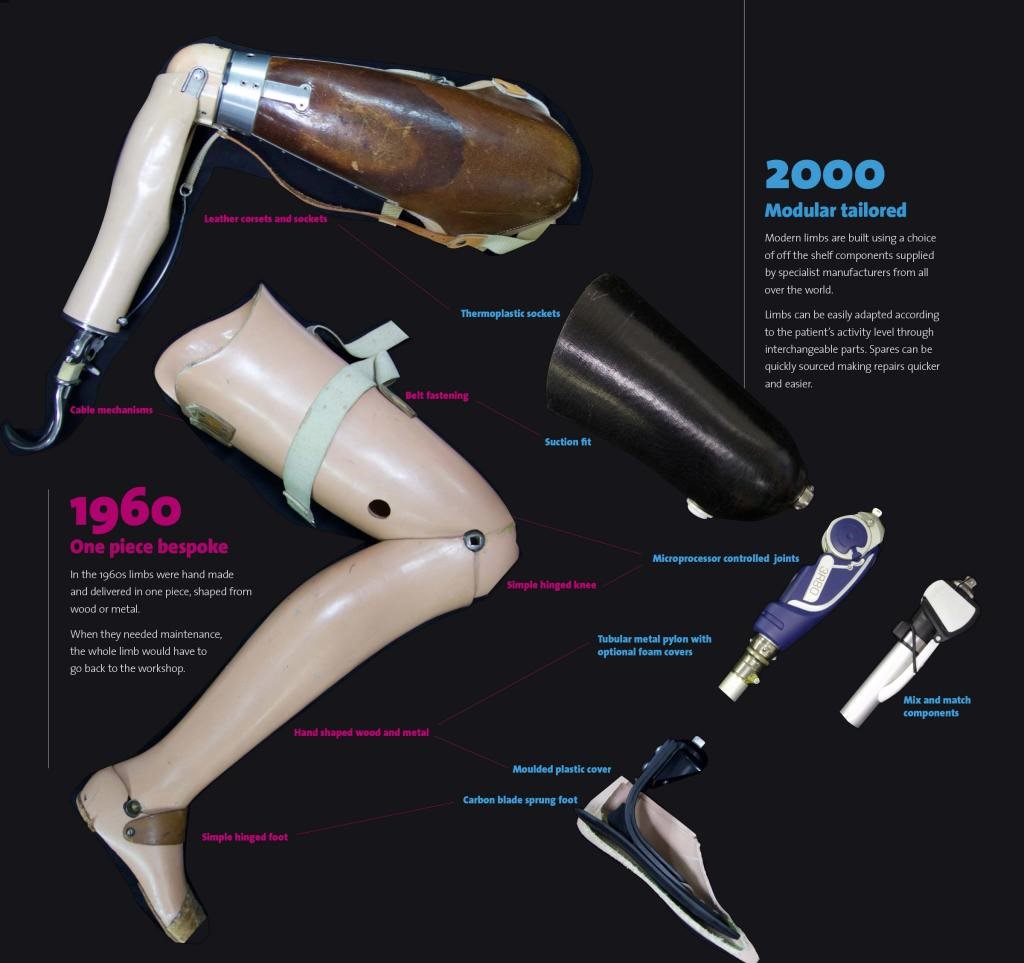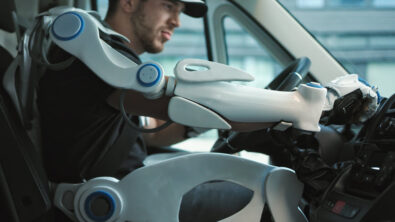Journey on my Prosthetic Leg


Are you a Paralympian yet?
Let’s start by clarifying something. Not all amputees are future Olympians! The unexpected fallout from the 2012 Olympics is that when people saw a prosthetic, they presume you should be leaping out of the block like Jonnie Peacock!
Unfortunately for me, this is not the case, the complexity of amputations is not considered, until you must get fitted for a prosthetic. Every amputee is different depending on the limb/s lost, the type of amputation, the amount of limb left, the wound, the amount of muscle left … the list goes on. The difficulty for the prosthetist, is fitting the prosthetic to the residual limb and keeping it there comfortably. This means that every prosthetic needs to be custom fitted. This is the difficulty in moving prosthetics forward.
4 years ago …
I lost my left leg in 2015 after contracting Strep A. I wrote a series of blogs about my experience, so I won’t go into it all again. That was 4 years ago and looking back, I feel like a ‘grown-up’ amputee now. What I mean by that is that the leg is not a novelty anymore. It’s just a body part … a detachable one, but still, I guess it’s how you feel about your left leg.
At the time these old blogs were written, things were still quite new for me. So how have things changed? In terms of the leg, nothing has changed. My leg is still a C-leg which has a microprocessor knee. It constantly measures and analyses what I’m doing to predict what it needs to do to help me function better. It amazes me how clever prosthetics have become and how far they have come.
3,000 years ago …
How have things moved on since humans started using prosthetics?

This toe is the first known prosthesis, from 3000 years ago, is made from wood and leather. So there have been big advancements in materials. Using lighter, stronger metals. Leather is still used now for comfort. There have also been huge developments made in functionality. Especially after the wars in Iraq and Afghanistan when investments meant research and developments were possible. See how limbs have progressed from 1960 to 2000. Using modular components was a huge factor in improving the lives of prosthetics users. Functionality is important and will continue to improve, but what are we forgetting?

Courtesy of Queen Mary’s Hospital Archives
How to make your Leg, ‘YOUR’ leg
I was so pleased to hear that in the UK, the NHS has understood how important the aesthetics of your limbs are. How can we help new amputees to accept this new prosthetic and make it feel like a part of them? These injection-molded decorative shields are now available in some NHS centers. You can customize them to make your prosthetic look how you wish. People are using them to project their personality which is a huge step forward from the fake skin and fake plastic flesh that never looked like your skin or flesh.
Onwards for prosthetics?
To find out about the future of Prosthetics, I spoke to Werner Herbst – Centre Manager, Opcare at Queen Mary’s Hospital Prosthetics Department.
He tells me that the next improvement will be electronic components for upper limb patients. Currently, there are limited provisions for electronic hands or multi-articulated hands. The aim is to bring the same policy for upper-limb that lower-limb patients currently have.
Also, the printing of components will bring a big change. Meaning a quicker turnaround time for the patient. There will be less waiting time for each custom-made component to be manufactured. There are still improvements to be made on the strength of the parts, but once available, this will make a big change. Meaning each component can be more easily replaced or upgraded.
Onwards for me?
So if the leg hasn’t changed? What has? For me, I’ve discovered a new sport. It is thrilling, it’s brutal, it gets the adrenaline shooting around your body, it used to be called ‘Murder ball’! I’ve joined a wheelchair rugby team. Playing with people with all types of disabilities. From Cerebral Palsy to MS, anything goes and I love that. It’s the most inclusive group of people I have known and this is what makes us such a great team. How? With all our differences, it has become a space where we get to know each other faster and more in-depth than in a ‘normal’ situation. And this is why I think we gel as a team.
The chairs involved in this game have to be able to absorb the massive hits, whilst keeping the ‘passenger’ safe. I would love to be able to simulate this in our software to measure the impacts and vibrations during a game. Using Simcenter software, we could use these measurements to study the design of the chair and perhaps optimize the design for weight and strength. Who knows … watch this space!!




